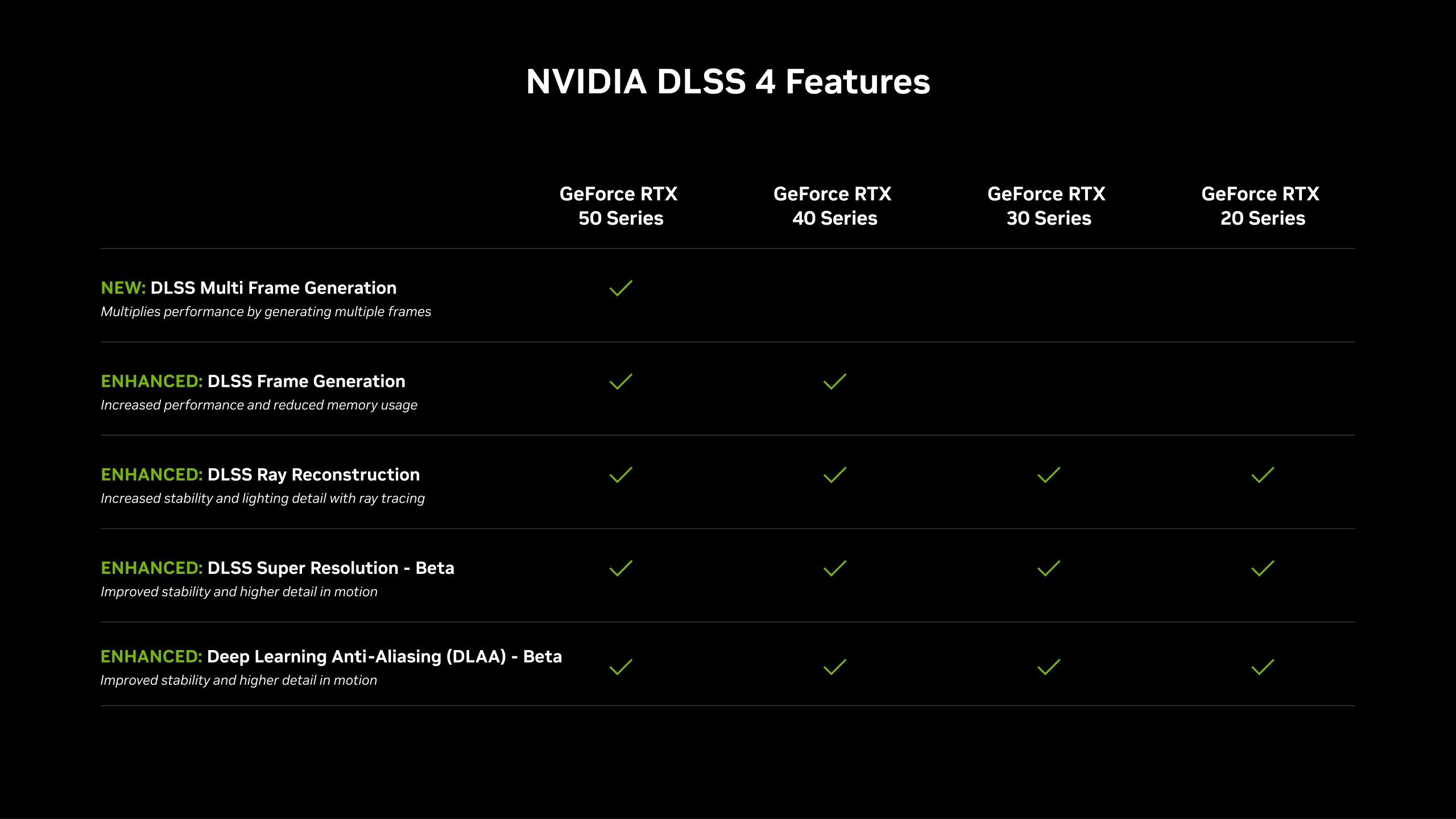Nvidia’s RTX 5000 series was unveiled at this year’s CES after a long string of leaks and rumors on what to expect. While these are a phenomal package of GPUs in their own right, there are several reasons why I personally believe these cards aren’t worth buying — at least at the moment.
Don’t get me wrong; the Nvidia RTX 5000 series are great GPUs. If you’re looking to build an all-new high-performance PC without sparing any expense, then the Nvidia RTX 5090 is an unbeaten card that will fit perfectly in your new build. For most people though, I can’t see a reason to buy pretty much any of them.
3
Advertised performance gains are deceptive
We don’t know how much better they are, but it’s not actually a two-times improvement
Nvidia has made some pretty bold claims when it comes to the RTX 5000 series and its performance. Claims that, when you look under the hood, don’t necessarily hold up to scrutiny. On the surface, Nvidia claims that the RTX 5070 (priced at $549) is capable of offering RTX 4090 levels of performance — a $1,599 GPU. It was made clear that it was made possible with DLSS 4 and Multi Frame Generation, but to a lot of consumers, that doesn’t necessarily mean anything.
When it comes to performance gains that the company is advertising, titles such as Alan Wake 2, A Plague Tale Requiem, Cyberpunk: 2077, and Far Cry 6, were used. These were with ray-tracing and DLSS turned on, which means that Multi Frame Generation was turned on, too. While not everyone notices it immediately, even current frame generation technology feels incredibly off when playing. Single-player titles like Spider-Man with frame generation make the game feel weird and borderline unplayable to me, and I’m not alone.
Let’s say you have a game that runs at 30 FPS, but the game itself is running at 60 FPS with frame generation. That means that only half of the frames can react to your inputs, as a frame can be displayed without accounting for your actions, leading to a sense of input lag or delay. Given that Nvidia’s performance claims involve Multi Frame Generation, and it’s said to be generating up to three frames for every “real” frame, the actual performance gains are likely significantly lower than a direct two-times increase from generation to generation.
2
Nvidia’s RTX 5000 series pricing is ludicrous
You’ll get better bang for your buck options on older or competing cards
Whie pricing is a little bit lower in some GPUs than was expected, that doesn’t mean that the pricing is necessarily competitive. Nvidia went with a more “affordable” $999 for the RTX 5080 (given rumors had it pegged at $1200 or even more), and the RTX 5070 Ti and RTX 5070 were priced at $749 and $549 respectively. Yeah, the RTX 5090 was priced at $2000, but you win some and you lose some.
However, even the $549 RTX 5070 will likely not be a huge step-up over whatever AMD launches at a similar price point, as AMD’s own RDNA 4 GPUs around the corner,. It’s very likely that they’ll undercut at least a little bit of the lower-end and budget lineup from Nvidia while still offering similar performance.
Finally, with the 5000 series now available, it’s likely that some of the RTX 4000 series will come down in price as well. That means if you want to upgrade to a great GPU, you can probably pick up a last-generation GPU and have a pretty good experience, anyway. While benchmarks aren’t available yet, we’re not exactly expecting an RTX 5070 to perform the same as the RTX 4090 in an actual, real-world sense. I have an RTX 4080, and nothing about these cards makes me want to upgrade to them.
1
Many features will be backported to the RTX 4000 series
Improved DLSS is coming to all RTX cards
While multi-frame-generation isn’t coming to the RTX 4000 series, all of the other new DLSS features will be. Even then, most of the new features will even be backported to the RTX 2000 series, meaning that if you’re vying for new DLSS features, many of them will be available on the oldest RTX cards in the future. That means you don’t even an RTX 5000 series card unless you want mutli-frame generation.
In other words, you’ll be getting basically all of the new features with your RTX 4000 series card, which also makes those cards an even better deal if you pick them up for cheaper than they are currently once the RTX 5000 series hits shelves. If the past-generation card is such a similar product, why spend so much more to get one of the new ones?
To be clear, not everyone cares to play games maxed out at 4K, and it’s a lot of expense to spare. According to the Steam hardware survey, in December 2024, 56.12% of gamers have a 1080p screen, with 1440p coming in at second place with 19.56% of gamers having one. The vast majority of gamers are on those resolutions, with only 4.21% using a 4K monitor as their primary display resolution.
In other words, 4K is a nice-to-have, but it’s not something people are apparently placing a significant amount of value in. While I have a 4K monitor, the games that I play work just fine at 4K on my 4080, and I’m not looking to upgrade anytime soon, either.




